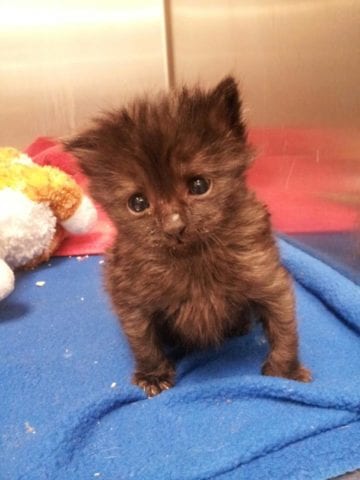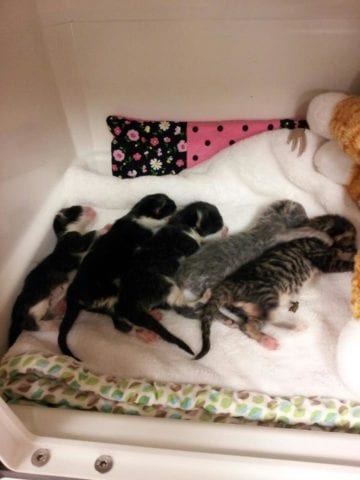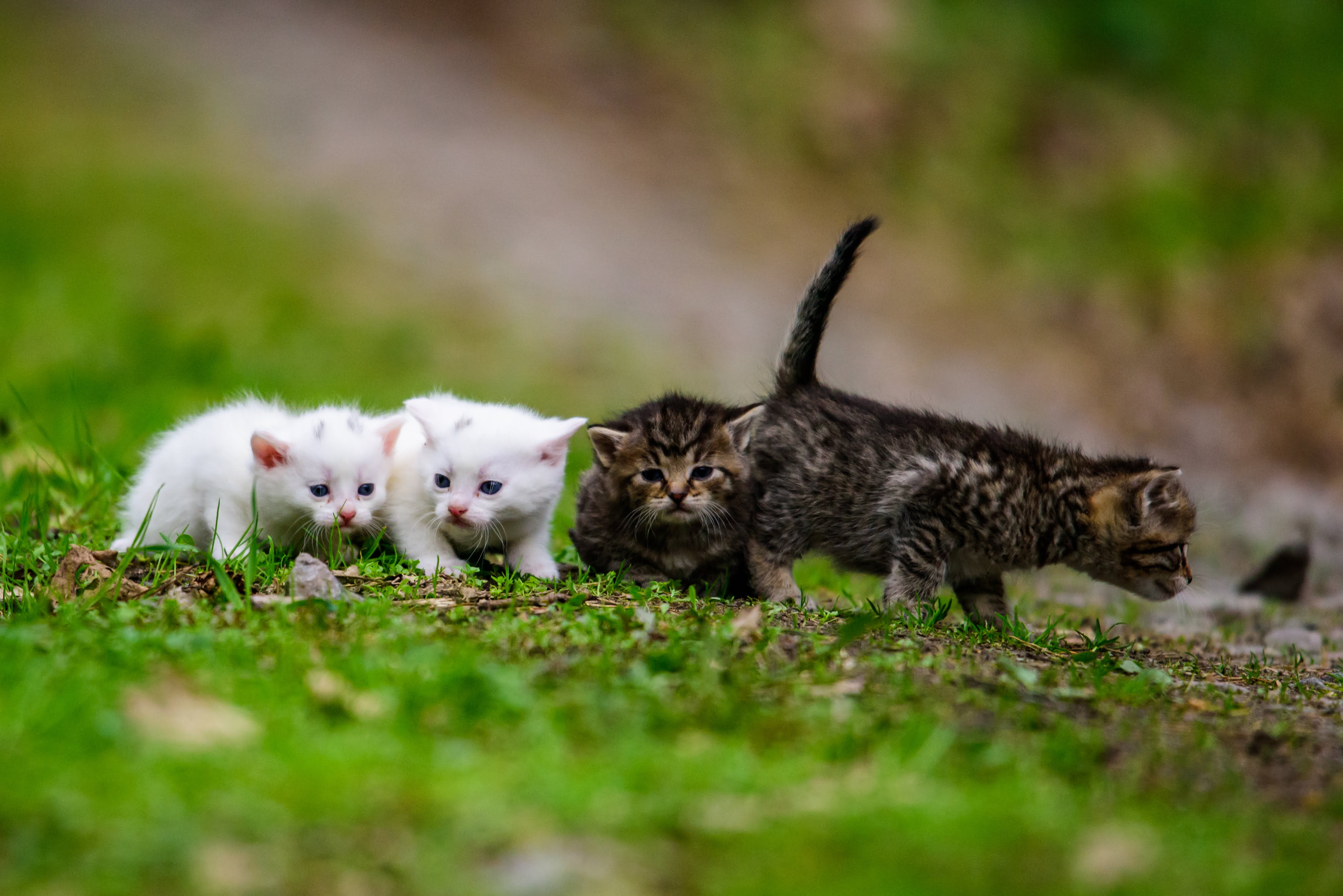Caring for Kittens Under 5 Weeks
You’ll make a great foster parent!
The youngest kittens are unable to eat on their own and require access to their mother’s milk or a substitute every few hours. Because of the time commitment necessary to feed and properly care for the youngest kittens, watch and be certain the mother cat is not returning to her kittens. She will often find a safe place to leave them while she is searching for food. If you are certain she is not coming back, consider caring for the abandoned kittens in your home. During kitten season, shelters are overrun with kittens and often lack the resources and people to successfully care for them all. We need the help of compassionate people to help raise and socialize kittens until they are old enough to find homes.

Essential Items for neo-natal kitten care
- Kitten formula. KMR is a preferred brand, but any milk formulated for cats is better than cow’s milk
- Bottles and nipples to feed kittens
- 3cc syringes for feeding tiniest newborns
- Meat-based Gerber baby food for fussy/sick kittens
- Wet kitten food
- Shallow food/water dishes
- Heat source (snuggle safe heating disk, heating pad, rice socks)
- Plastic tub, no lid, to contain 0-3 week old kittens (before they learn to climb)
- Airline crate or enclosed playpen for older (climbing) kittens. You want to avoid anything that would have holes large enough for the kittens to escape through
- Fleece or towels
- Non-clumping litter – clumping litter can prove life-threatening to kittens if ingested
- Dawn fragrance-free dish soap (for bathing kittens with fleas)
- Digital kitchen scale to weigh kittens (weight gain= healthy & eating)
Tips to care for kittens Under 5 Weeks of Age:
- Extremely young kittens that need mother’s milk will need to be bottle-fed every 2 hours
- Kitten formula (such as KMR) and bottles can be purchased at PetSmart, Petco, or any pet supply store. Do not feed kittens cow’s milk; doing so can cause diarrhea which can prove fatal to tiny kittens
- Keep kittens contained in a confined area such as a large rubber tote; you may even find that your workplace is open to allowing the kittens to accompany you during the day.
- During weaning, kittens may look like they are eating, but are actually suckling it in the same way they would on Mom. Make sure that kittens are actually eating even though their head is in the food dish
- Tiny kittens do not poop and pee on their own – without mom, you will need to stimulate the kitten’s bottom using a soft tissue or cloth to use the bathroom at feeding time
- The tips listed on this page are not a complete guide to caring for kittens. Click the following links for advice on raising infant kittens: The Kitten Lady or the National Kitten Coalition
- Download a free copy of the Kitten Lady’s guide to caring for orphaned kittens here
- While weaning, bottle feeding should continue while learning to eat solid food. This stage can be difficult to recognize, so if you’re unsure of age, have multiple food sources available and monitor the kittens’ weight to ensure they are eating

Tips to Care to Kittens 5 Weeks of Age and Older
If you are unable to provide care for extremely young kittens yourself and mom has not been seen, do not wait! Help the kittens by getting them to Charlotte-Mecklenburg Animal Care and Control. Once you have moved kittens from where you found them, they need to be cared for, and waiting too long could be life-threatening. When young kittens are separated from mom, they are unable to gain immunity from their mother’s milk. Due to that and the high-stress environment of animal shelters, kittens are more likely to be susceptible to upper respiratory illnesses and other diseases that their fragile immune systems cannot fight. This is why we stress that the #1 best place for kittens is with mom. The second best is staying with a foster family instead of a shelter
